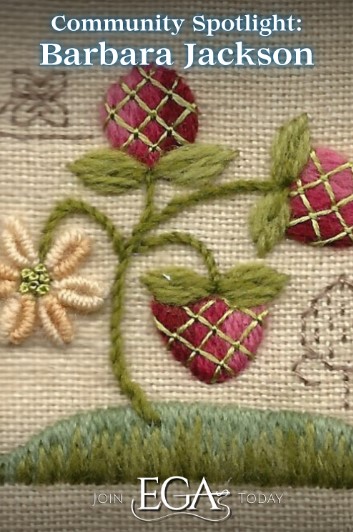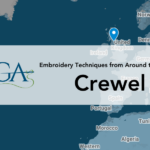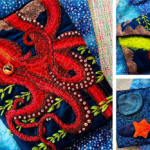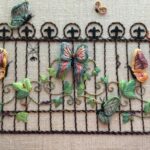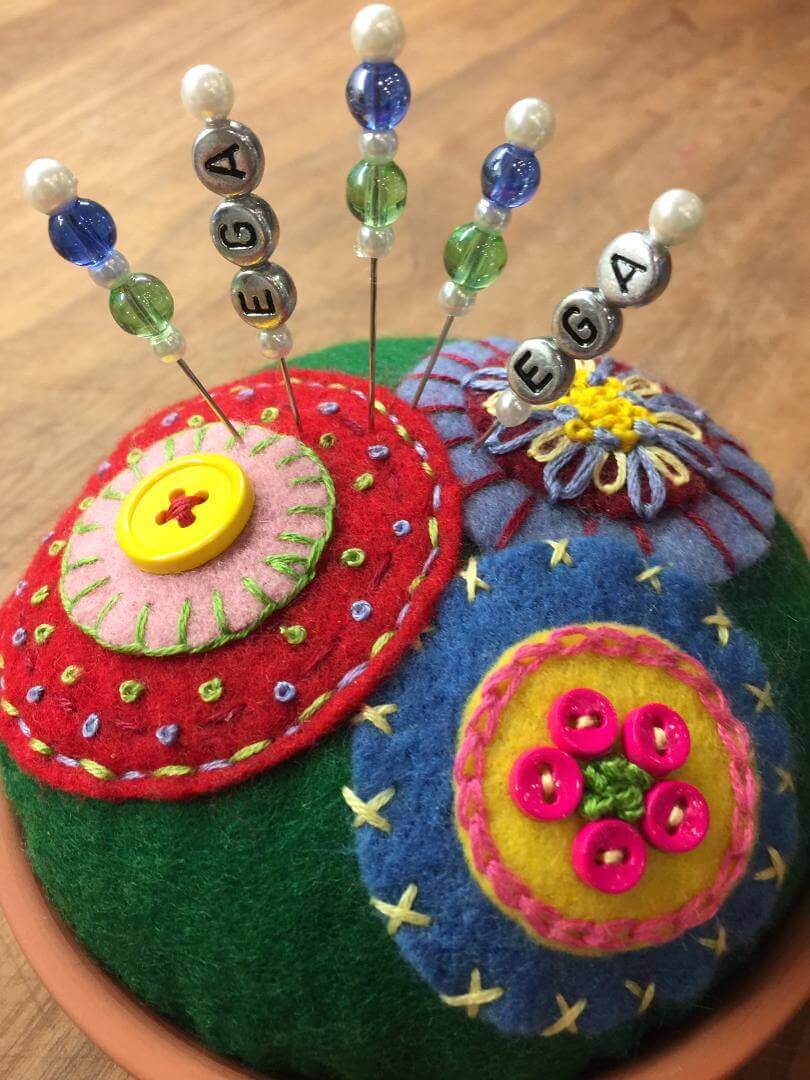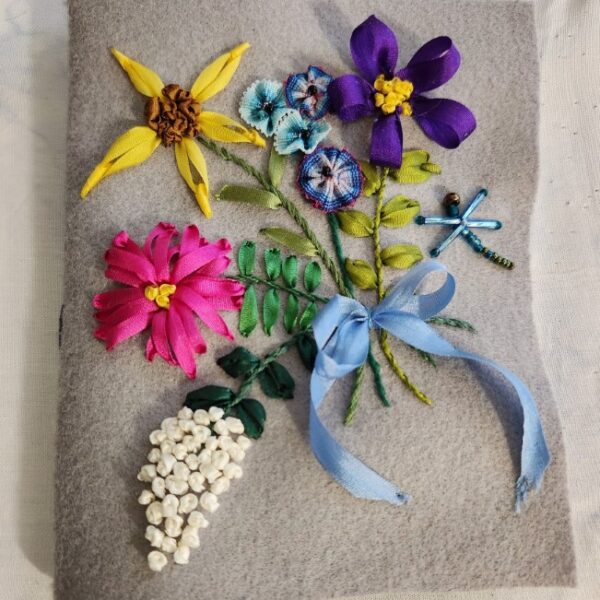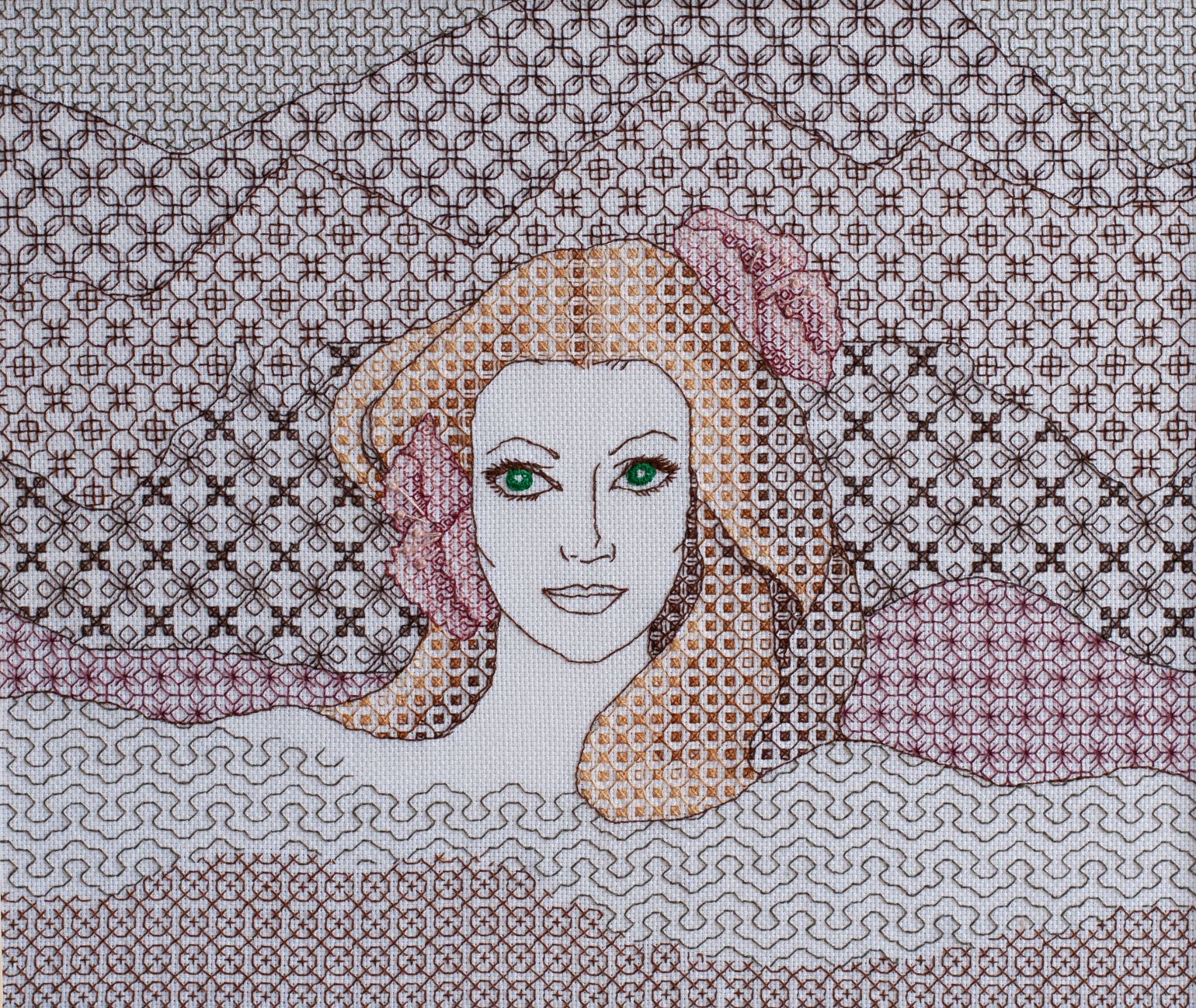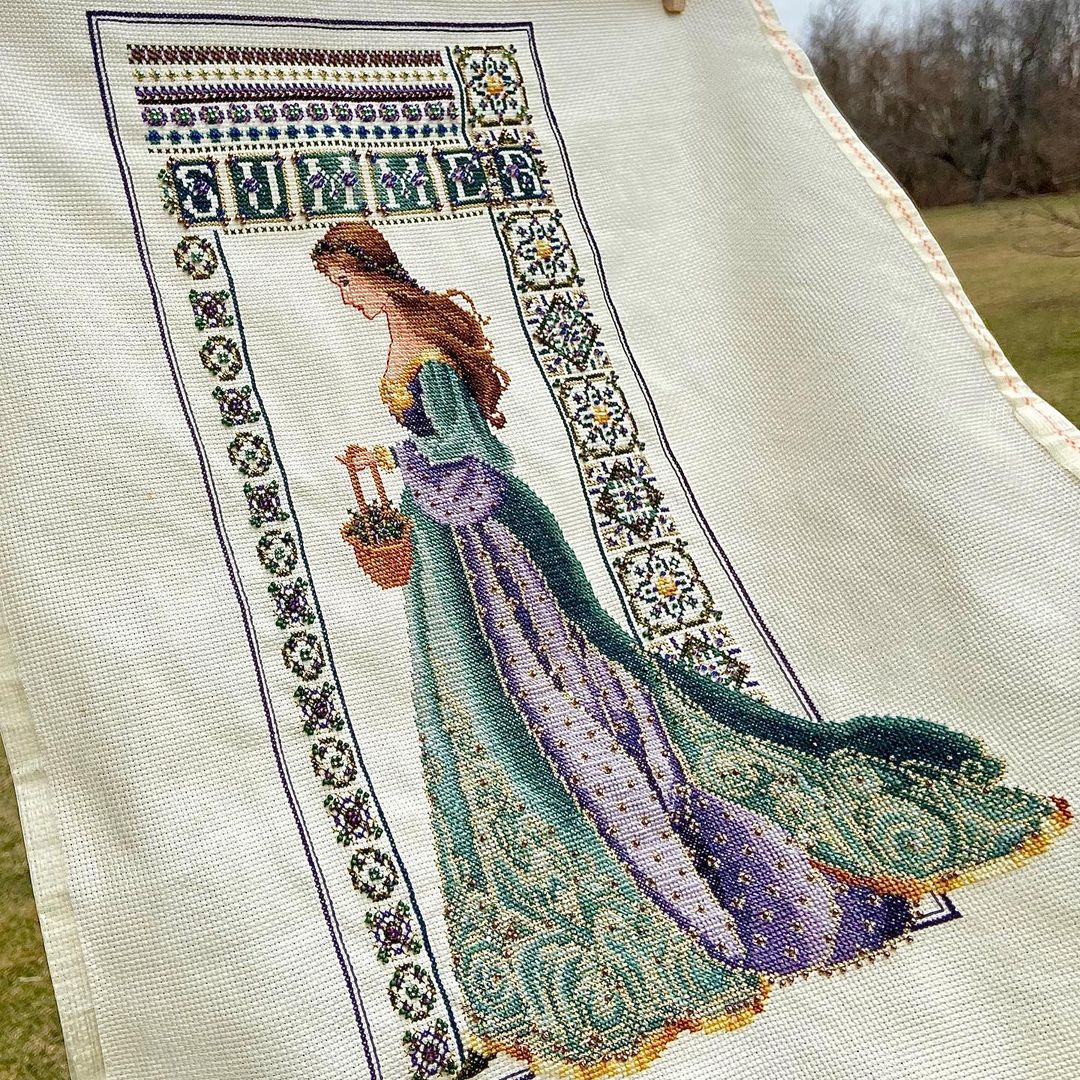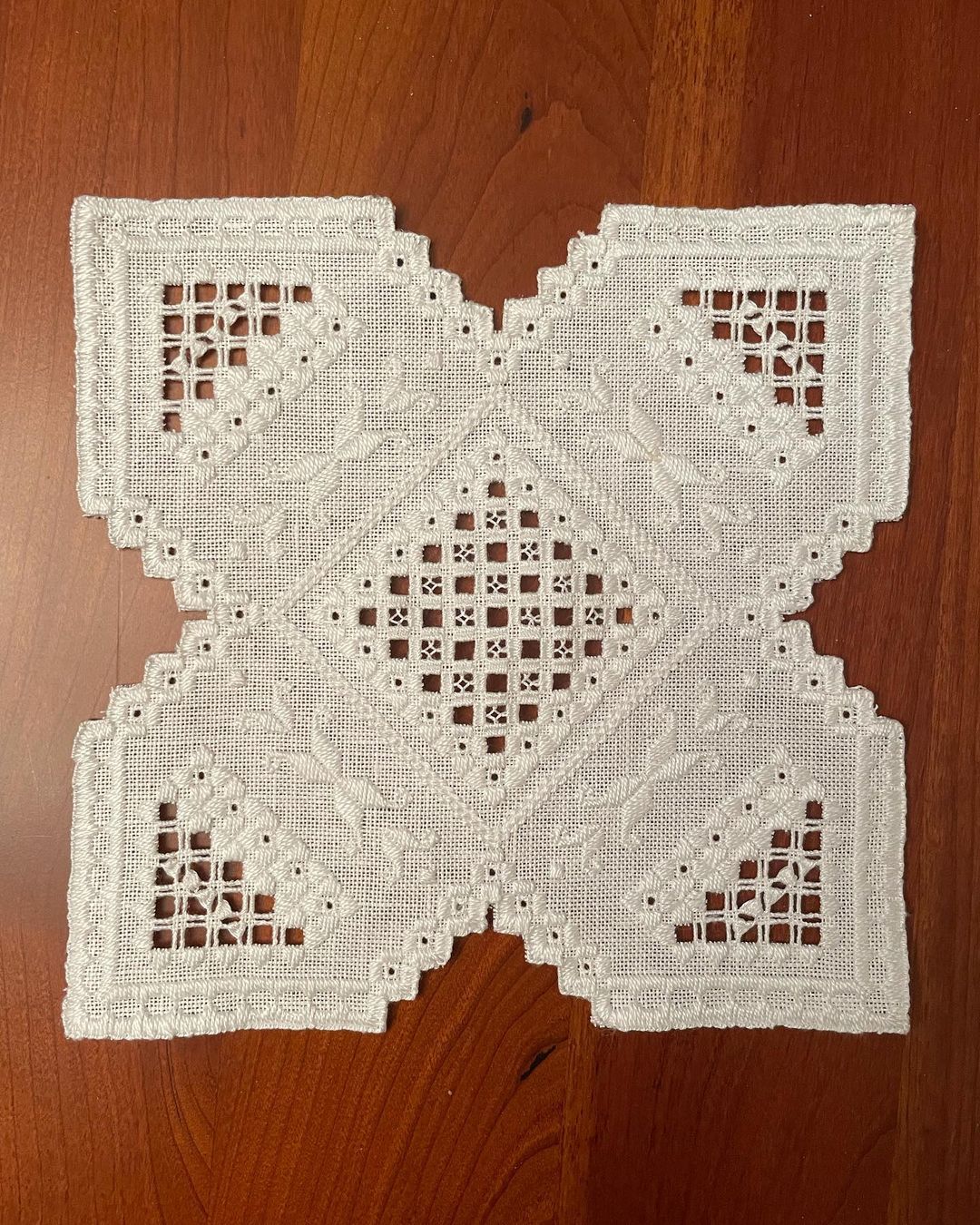Shading methods are one of the most important lessons we can learn for adding depth, shadow, and light to our embroidery pieces. Early English crewel embroidery provides excellent examples of advanced shading methods accomplished with a variety of stitches, wools, and embroidery techniques. EGA is very excited to host Barbara Jackson, a graduate of the National Academy of Needlearts teacher certification program and frequent teacher for ANG National Seminar, EGA National Seminar, and Callaway School of Needlearts. Her upcoming online studio class, Shading Traditions, explores various methods for imparting depth to embroidery with shading techniques. Here, Barbara shares some insight into her history with crewel embroidery and early English and American design.

When did you first start embroidering? Where did your love for embroidery begin?
I started in high school. There was a needlework shop nearby. At that time, counted cross-stitch was not around. In the late 1960s, it was crewel or “fill in the background” needlepoint. I found that type of needlepoint boring, so I opted for the crewel. It wasn’t historical, but I liked working with the crewel wool.
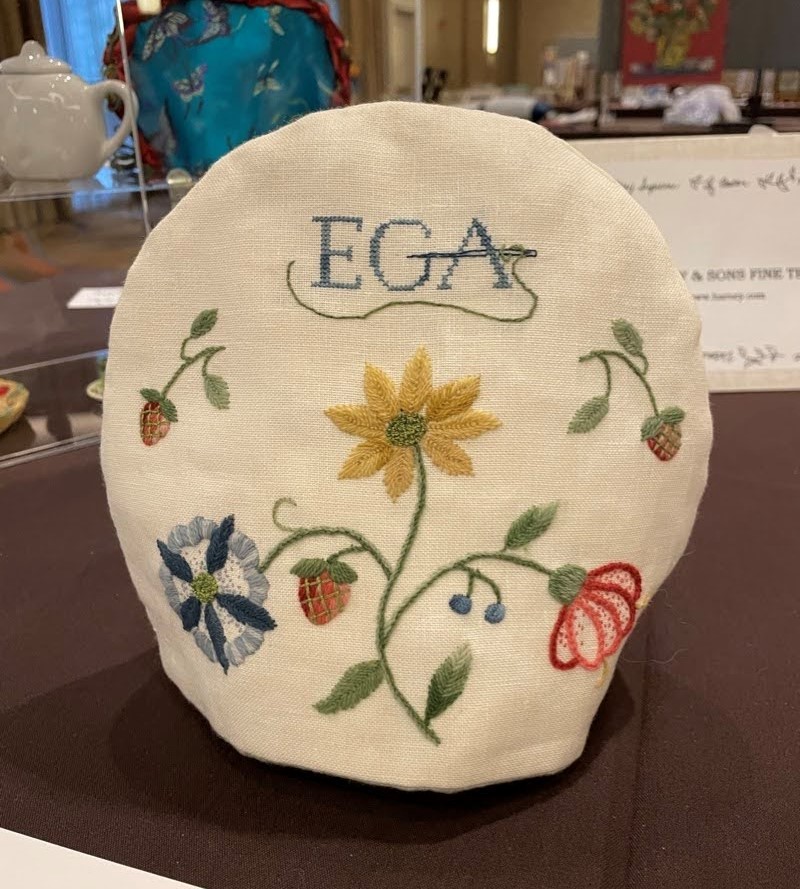
Your design focus is on early English and American design. What drew you to this aesthetic in particular? What are some of the identifiable elements of this design style?
I have always loved history—early American history, in particular. In 1970, American Crewelwork by Landon and Swan was published and my local shop had a copy. It was the first time I had seen information that dealt with the time period I was interested in, and had a bibliography and source page. I was off to the races. Remember, this was before the internet, eBay, and Google were available to help you find things.
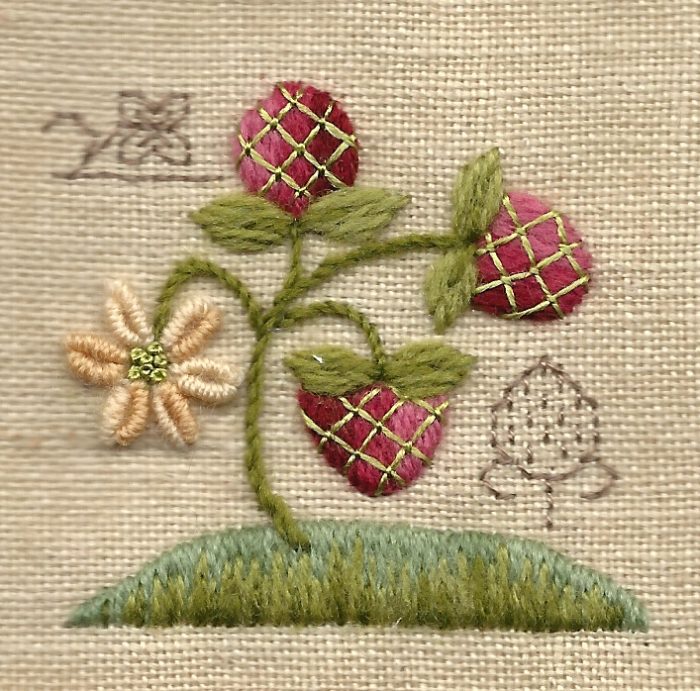
You have a particular affinity for crewel embroidery. Why does this technique intrigue you?
I have always liked stitching with wool and how you can create what looks like very detailed designs with very simple stitches. Early American crewel does not have “long-and-short” in it, but there are so many other ways to give the suggestion of shading in your design.

Where do you find inspiration for your designs?
Early on, I started collecting every motif I could find that was early American. I was lucky in being introduced to the late Mary Dick Digges by a mutual friend. Mary Dick invited me to her studio and said, “rummage around all you like.” She had a treasure trove of early American stuff, including actual pieces. She let me copy and photograph anything I wanted, including a blue and white bed curtain that she found hanging out of a trash can up in Connecticut. Consequently, I have a filing cabinet full of inspiration.

Do you have a favorite design from your portfolio? Why is it your favorite?
Whatever I’m working on is my favorite of the moment. But, looking back, I really enjoyed a sewing purse that I did about 18 years ago. It was stitched with Heathway crewel wool and had a very traditional 18th century motif. It lived at the needlework shop in Williamsburg until they closed. Another favorite is a little birdie on a pear shape. Once I realized that not everything had to be framed, I felt invigorated to see what else could have crewel on it. That little birdie is going to be part of the next EGA online class.

Your upcoming class with EGA, Shading Traditions explores methods for shading and highlighting using various stitches and crewel techniques. What should crewel embroiderers expect when taking this course?
That design has a bit of a backstory. When I was studying at the Royal School of Needlework, I noticed a similar design on their wall. I asked about it and found out it was one of the exercises an apprentice had to complete to show her competency in shading. I wanted my design to show many of the techniques a stitcher could use to create shading in her design. (This is not an early American design!)
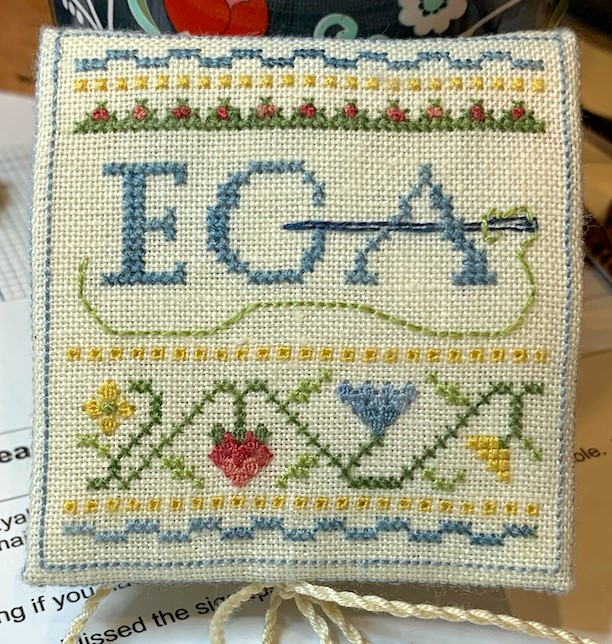
Do you have any advice for needleworkers who are new to crewel embroidery and shading/highlighting techniques? Any resources to recommend?
Yes! When holding a hoop in your hand, only allow your fingers to hold the hoop along the edges. Don’t start allowing your fingers to push against the linen on the underside. Pretty soon your linen will not be taut and you will have bumps and lumps on the linen. I have been guilty of this myself—it’s so easy to do.
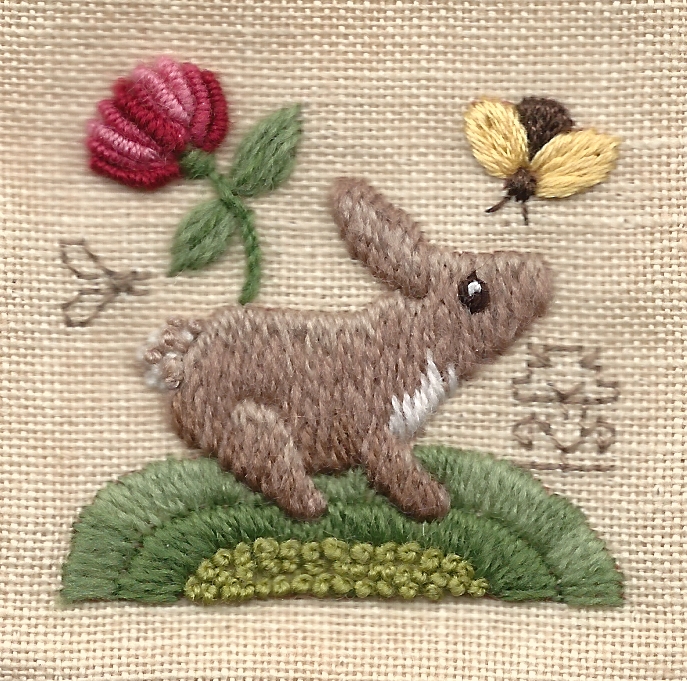
Where can interested needleworkers learn more about you and your designs? (website, social media profiles, etc.)
I have a website (tristanbrooks.com) that sells my Heathway crewel yarn and a few of my kits. The Heathway is very special to me because I was able to choose the colors. The line was developed by the late John Cunningham, a master dyer in Wales. He insisted that each color would have 9 values. I love how much shading can be accomplished with this many value choices.
